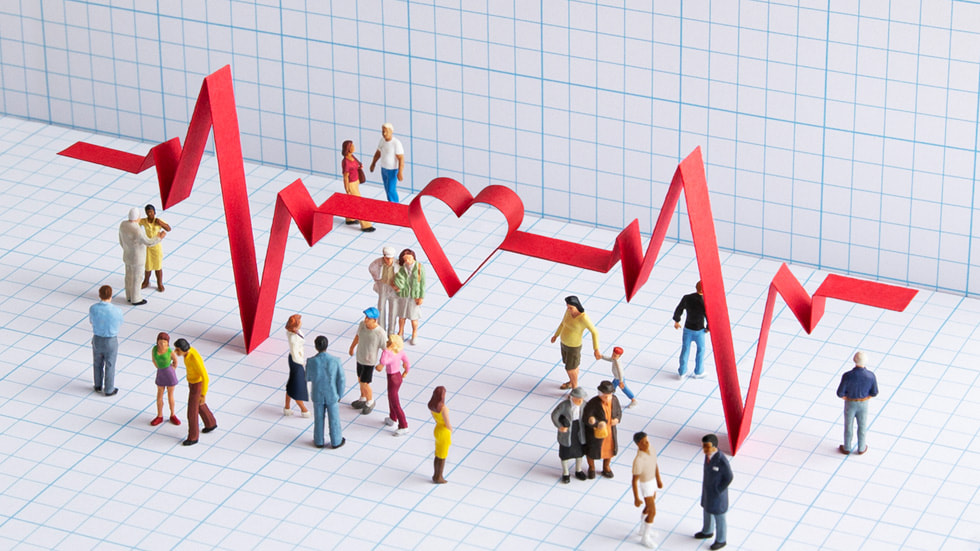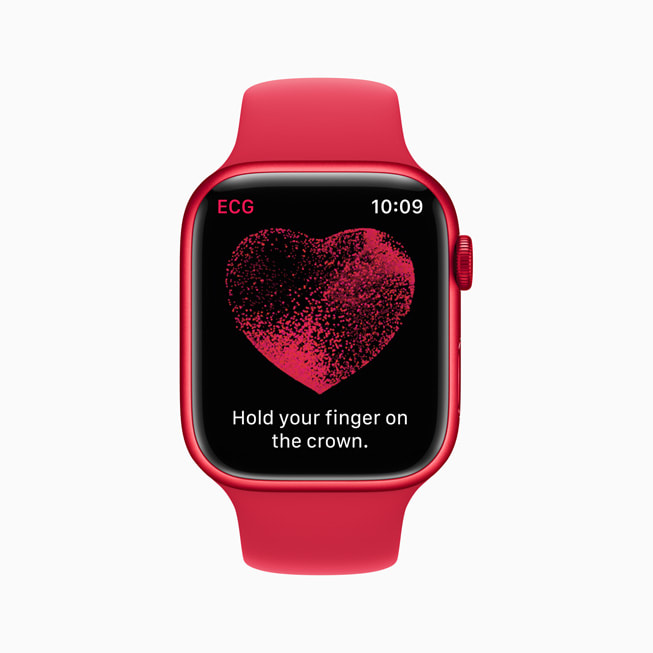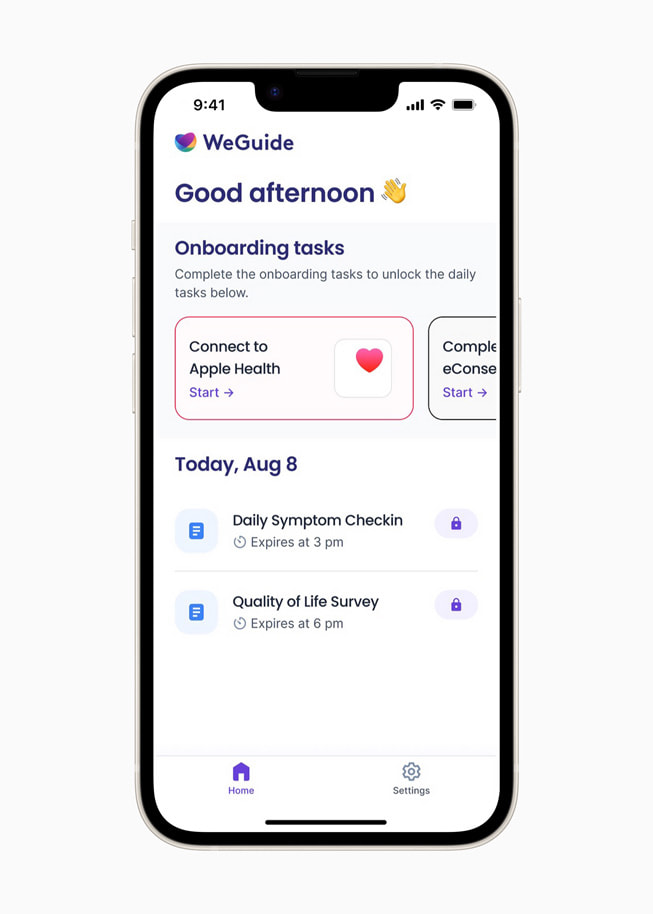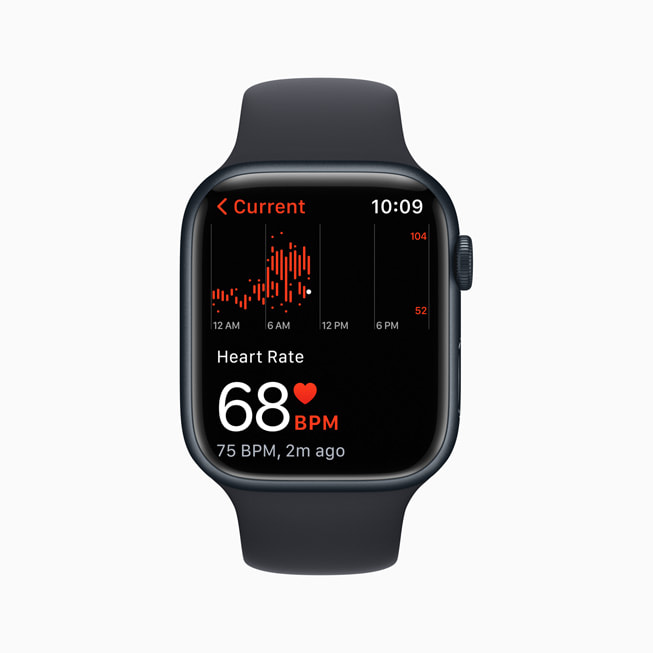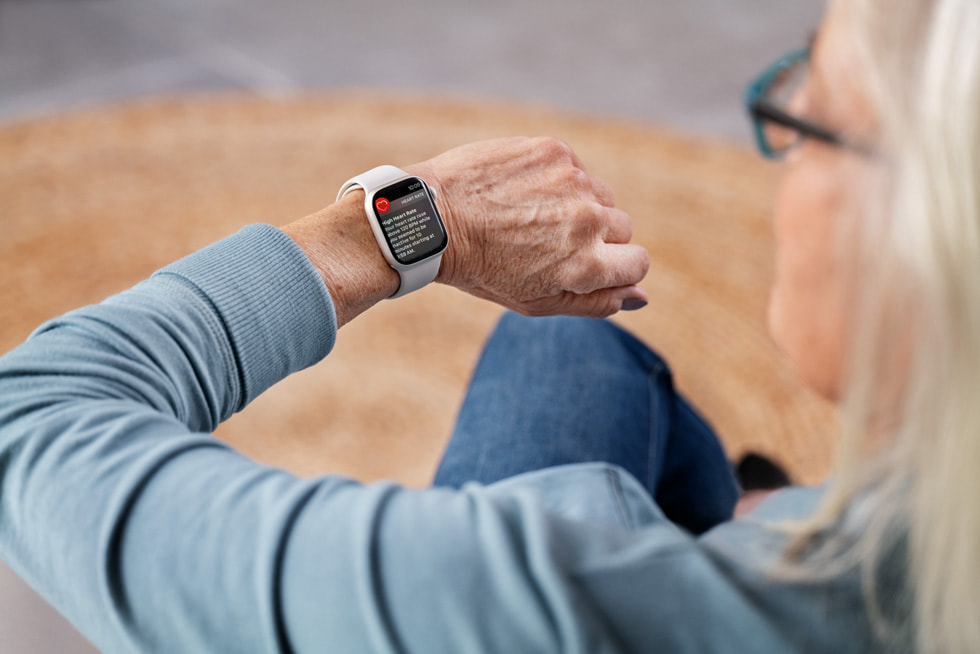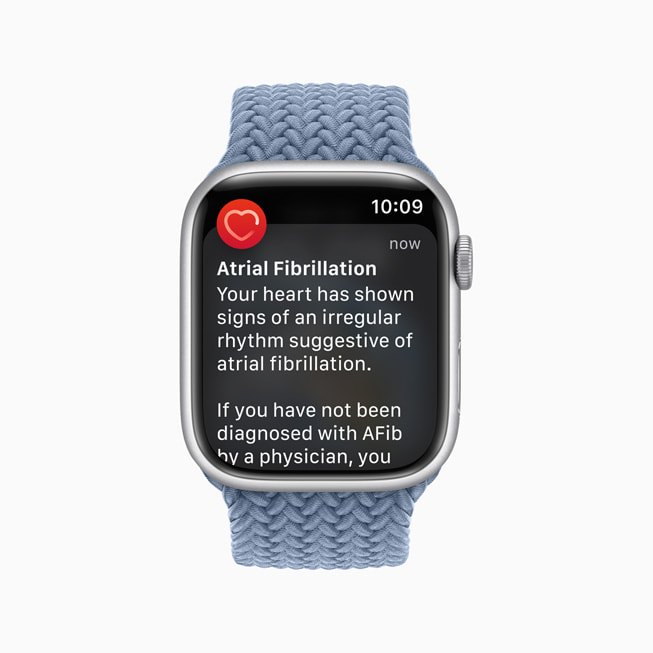UPDATE
21 February 2023
With Apple Watch, researchers explore new frontiers in heart health
In a single day, the heart of an average, healthy adult beats more than 100,000 times. Beat by beat, day by day, a picture begins to emerge — an image that goes largely unseen. Apple Watch can help make the invisible, visible. With heart health features — including high and low heart notifications, Cardio Fitness, irregular rhythm notifications, the ECG app, and AFib History — Apple gives users an ever-developing view of their health with actionable insights.
The same advanced technology that provides insights to help users better understand their health also has the potential to open the door to discovery for the research and medical communities. Since Apple launched ResearchKit and CareKit in 2015, researchers, clinicians, and developers have found innovative new ways to study, track, and treat a broad range of conditions.
To further drive discoveries that improve health at scale, Apple launched the Investigator Support Program. Through this program, Apple provides researchers with Apple Watch devices, enabling them to break new ground in health research, including the scientific understanding of the heart.
Apple is spotlighting the cutting-edge work of health researchers around the world who are using Apple Watch to study the heart like never before.
Associate professor Rachel Conyers and Dr. Claudia Toro are senior pediatric oncologists from Melbourne, Australia, primarily spending their days caring for children in a tertiary pediatric oncology clinic and researching toxicities related to children’s cancer therapies within the Murdoch Children’s Research Institute. Together they are looking at how treatment can impact heart rhythm and are trying to identify innovative ways to intervene. The inspiration for their work comes from their patients — both success stories and heartbreak.
Toxicities in cancer treatment can lead to heart rhythm disturbances, such as prolonged QT syndrome, which can be potentially life-threatening. Prolonged QT creates an irregular heart rhythm, increasing the time needed for blood to flow through the heart.
Because of their susceptibility to long QT, children receiving cancer treatment are routinely screened at least once per week with a 12-lead electrocardiogram, according to Dr. Conyers. However, outpatients still need access to monitoring.
“I read about the Apple Heart Study and I thought this could be important for pediatrics,” said Dr. Conyers. “We used to think of cardiac toxicity as something that happened 10 years after treatment. But now we know that new cancer therapies (like specific inhibitors or immune therapy) can cause arrhythmias within 48 hours of medication — so there’s a big gap in terms of what we know about the toxicities at the moment.”
In the coming months, Dr. Conyers and her team at the Murdoch Children’s Research Institute will begin with researching the sensitivity of the Apple Watch ECG app in 40 children and adolescent patients.1 From there, the team will look for ways for patients to take their ECGs wherever they are, whenever they’re able. With those insights, the team hopes to better understand the reality of cardiac toxicity and identify potential opportunities for intervention.
Every Bay Area resident remembers the day the sky turned orange. It happened September 9, 2020. Dr. So-Min Cheong, an associate professor in the Public Service & Administration Department at the Bush School, Texas A&M University, was in Palo Alto, California.
“I still have photos of that day on my iPhone,” said Dr. Cheong.
California experienced a series of devastating wildfires in 2020 and 2021. Dr. Cheong, who researches the social and health consequences of environmental disasters and climate change, saw an opportunity to study the personal impact of wildfire smoke on cardiac health in firefighters.
“General health recommendations or off-the-shelf interventions weren’t good enough for me,” Dr. Cheong explains. “People are unique. Each individual is different when it concerns their health, and I wanted to learn more.”
Through her connections in the research community, Dr. Cheong learned that Apple Watch could help capture the kind of health data she needed. “A colleague of mine at Stanford had shared their experience using Apple Watch, and it’s known for its heart rate accuracy,” she adds. “I had always wanted to be able to do more noninvasive, sensor-based analysis on individuals to get at more precise health measurements.”
Next month, Dr. Cheong at Texas A&M University and Drs. Brian Kim and Marco Perez at Stanford Medicine will begin equipping firefighters with Apple Watch to study the impact of wildfire smoke on heart health. Wildfire season begins in spring in Texas and summer in California, and up to 200 firefighters in these locations will join the study.
From Apple Watch, the study plans to monitor heart rate and rhythm, sleep, blood oxygen, activity data, and more. Firefighters will also wear an air quality monitor and complete surveys related to sleep, activity, and wildfire smoke-related symptoms.
“Firefighters are bound to benefit from the study,” Dr. Cheong shares. “We know wildfire smoke directly affects their health and with a study like this, they’ll be able to see their results in real time.”
But she doesn’t want to generalize what the study’s potential findings are at this point, particularly when the core focus of the research is looking at the kind of individualized and precision health data that Apple Watch can provide.
“Studies like this one haven’t been done before, so it’s not a matter of proving or disproving a hypothesis,” said Dr. Cheong. “It’s more exploratory and the outcomes will help us understand the accuracy of an analysis like this to generate tailored interventions. I also think a study of this nature could help us understand high risk groups better.”
According to epidemiology experts in Europe, the estimated rate of atrial fibrillation (AFib) in the European Union is expected to double by 2060. AFib is a common heart arrhythmia that can have serious impacts — such as a higher risk of stroke or heart failure — if left untreated.
At the Amsterdam University Medical Centers, Dr. Sebastiaan Blok, director of eHealth at the Cardiology Centers of the Netherlands, and his colleagues are exploring ways to detect AFib earlier. The researchers have developed a randomized controlled study as part of a larger initiative called HartWacht, the first reimbursable eHealth concept.
In the Netherlands, “There are about 300,000 people who have been diagnosed with atrial fibrillation,” said Dr. Nicole van Steijn, an investigator on the research team. “But there’s also an estimated 100,000 people who have it but don’t know, likely because they haven’t experienced symptoms.”
As part of their study, they plan to enroll more than 300 patients over the age of 65 who meet a risk threshold for AFib. Half of the participants — the intervention group — will wear Apple Watch for at least 12 hours per day.
“Apple Watch is such a widely used, reliable consumer wearable that we thought it would be a great device for us to integrate into our research to better understand how we could potentially integrate it into the larger health system,” Dr. Blok shares.
As part of the group’s study design, participants are expected to take an ECG once every three weeks, or if they begin feeling symptoms. If the participant receives an irregular rhythm notification, the researchers will connect with the participant and instruct them to take an ECG and share the results.
Within three weeks of the study, researchers were able to identify a participant with AFib in the intervention group who wasn’t experiencing any symptoms.
This study marks the beginning of what they hope to understand using Apple Watch. In the future, they plan to explore ways to identify possible opportunities to use the ECG app to monitor patients from home, as certain medications can alter a heart rhythm. They’re also considering how Apple Watch could possibly be used to monitor heart failure patients from home, given it’s a costly disease, and identify predictive biomarkers for exacerbations.
“We are continuing to grow and innovate with new opportunities, based in science and technology,” said Dr. Blok.
Share article
Media
-
Text of this article
-
Images in this article
- The ECG app is cleared for use in adult patients. Pediatric use is limited to investigational use only.
